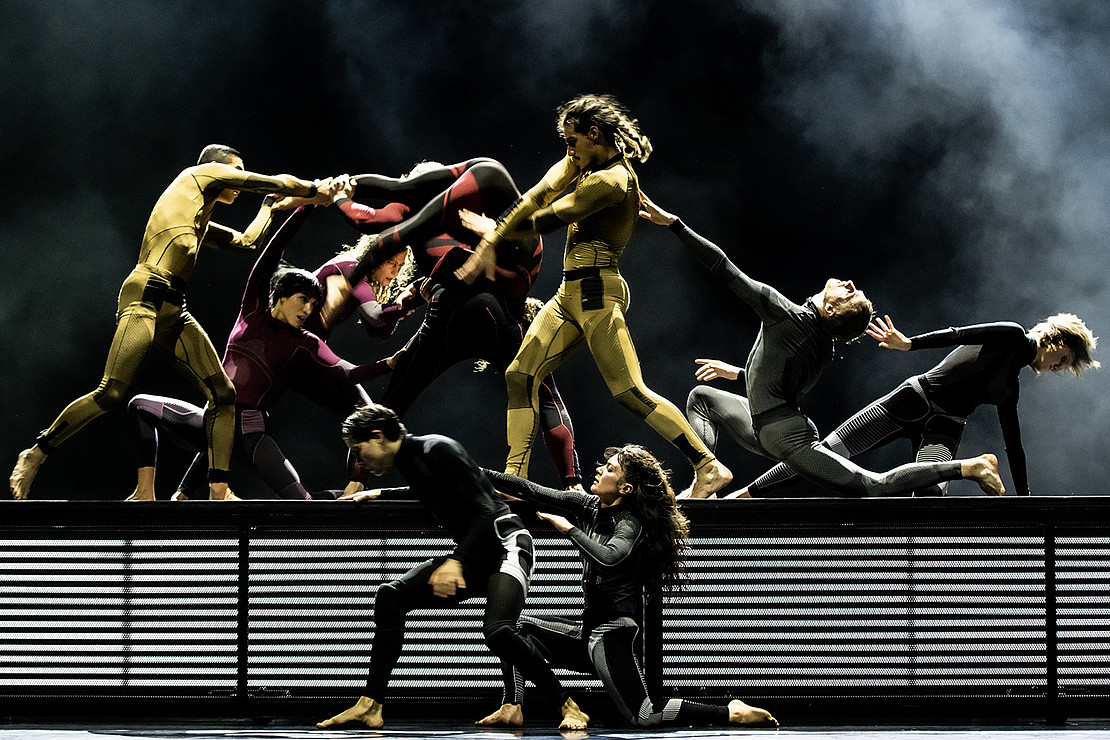Project description
Reception as an area of aesthetic-cultural education requires individual opinions on 'artistic' products, judgments and articulations. Dance as a physically based art form has particular potential in this respect.
 Image: TANZ_KASSEL/Staatstheater Kassel©Sylwester Pawliczek
Image: TANZ_KASSEL/Staatstheater Kassel©Sylwester Pawliczek Contemporary dance
Contemporary dance, which currently dominates theaters, enables a critical positioning in relation to "standards and norms" (Brandstetter, n.d.) and addresses current political issues, "such as migration, questions of identity and foreignness" (ibid.). Contemporary dance thus offers young people in the conflictual phase of adolescence a field for critical examination of social issues, role and world views, identity concepts and physicality.
 Image: TANZ_KASSEL/Staatstheater Kassel©Admill Kuyler
Image: TANZ_KASSEL/Staatstheater Kassel©Admill Kuyler  Image: TANZ_KASSEL/Staatstheater Kassel©Bettina Stöß
Image: TANZ_KASSEL/Staatstheater Kassel©Bettina Stöß Similar to the reception of poetry, contemporary dance, which is often perceived as unwieldy, also opens up a field of experimentation for dealing with ambiguity and ambivalence. It can be assumed that, with appropriate guidance and preparation, even contemporary dance, which is supposedly difficult to understand, is accessible to young people. The question of the accessibility of dance performances on stage is highly relevant, not least in terms of cultural participation.
Studies have shown that cultural participation is closely linked to the formal education of parents (e.g. Keuchel & Larue, 2012). Despite numerous education policy initiatives, only a small section of the population has access to state cultural institutions and uses them regularly (Renz, 2016). This also applies to the reception of dance among young people. In order to be able to support the reception of dance, it is necessary to generate research-based knowledge in order to be able to react to this in a targeted manner in educational practice (e.g. in schools, cultural institutions, teacher training). The Watchin' Dance project aims to make a contribution to this.
In addition to the reception of stage dance, dance in virtual space is becoming increasingly important for young people in the 'post-digital' society (Steinberg et al., 2019). Commercial platforms such as YouTube or TikTok are increasingly influential here and the reception of dance clips and videos on these platforms is an important trend among young people. So far, however, little is known about the specifics of changing dance (receptive) practices as a result of digitalization.
The project
The overall aim of the project is therefore to identify the specific modes of reception and educational experiences of adolescents and young adults that are associated with the reception of dance in analog and digital spaces and how reception processes can be supported in terms of enabling cultural participation.
Methodologically, the project is based on the paradigm of qualitative research and uses various interpretative methods. A mixed-method design consisting of interview research and phenomenological vignette and anecdote research (Baur & Schratz, 2015) is used to track down individual reception experiences and educational processes.
